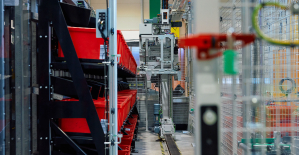Carbon capture, utilization, and storage (CCUS), or in other words, carbon capture, utilization, and sequestration, is a reliable solution to the future of energy. Global energy demand is increasing daily, and Carbon capture and utilization are the answer to securing reliable energy supply while achieving zero emissions. According to the Global CCS Institute's 2019 Status Report, 40 million metric tons of CO2 are collected and stored each year from facilities that are either operational or under construction. The United States alone released nearly five billion metric tons of CO2 in 2018. There are now 51 large-scale CCS plants in operation or under development throughout the world. There are ten large-scale operating plants in the United States alone.
What is Carbon Capture?
In a nutshell, carbon capture is the process that traps carbon dioxide gas emissions from sources such as coal-fired power plants and recycles or stores them so that they do not pollute the atmosphere with more carbon dioxide.
Carbon dioxide occurs naturally in geological sources like oil and gas reservoirs, exploited coal seams, or in saline reservoirs that previously stored crude oil, natural gas, and brine. The captured carbon dioxide is converted to valuable hydrocarbons like methanol, plastics, concrete, biofuel, and reactants used in various chemical processes.
How Does Carbon Capture Work?
Carbon dioxide (CO2) is an essential gas in the atmosphere as it creates the greenhouse effect that blocks the harmful sun rays from reaching the earth's atmosphere and the sun's heat from radiating into space causing global warming. The presence of the greenhouse effect warms up the earth and maintains a temperature that supports life. Scientists explain lack of the greenhouse effect would lead to the freezing of the planet as we know it to an average temperature of 0 degrees Fahrenheit (-18 degrees Celsius).
Carbon Capture, Utilization, and Storage (CCUS) technologies work by capturing the carbon dioxide from the source, transporting and storing it deep underground where it is isolated. By capturing, utilizing, and keeping, scientists can prevent the excess CO2 off the air and from entering the atmosphere. Carbon capture and storage involves three simple steps:
1. Capture
Carbon dioxide capture is done by using technologies like absorption, adsorption, gas hydrate, chemical looping combustion, calcium looping, cryogenic, multiphase absorption, oxyfuel combustion, and membrane gas separation. CO2 captured directly from the air through this method is less effective and tedious than capturing it at the source. Carbon capture is possible from organisms that produce ethanol during fermentation, a process used to generate electricity.
2. Transportation
The captured CO2 needs transportation for safekeeping. In the USA and UK, the preferred means of transport for carbon dioxide is via pipelines as they are cost-effective, can be used over a long distance, and can transport large quantities of CO2. Alternative means of transport are by ships, rail, or tanker trucks. However, the mentioned options are twice as expensive as transportation by pipeline or shipping.
3. Storage
- it comes to the long-term storage of CO2 various methods are used, such as geological storage, where the carbon dioxide is stored in gas or liquid form. Another is mineral-based solid storage, which means reacting the CO2 with metal oxides to produce stably carbonated. Lastly, the other method is ocean-based storage which is illegal in some countries as it has the potential to increase ocean acidification significantly.
Carbon Capture Methods
Methods of carbon capture are split into three main technologies:
Post Combustion Capture
Post-combustion capture is the process of removing CO2 from the atmosphere after a fossil fuel burns. This method is applicable in power plants, and it involves capturing CO2 from the flue gas released in the power station or other carbon-emission-producing facilities. This method of carbon capture can be retrofitted into existing power plants and integrated into new-build plants with minimal disruption to operations.
- combustion of fossil fuels produces so-called flue gases, which include carbon dioxide, water vapor, nitrogen, and sulfur dioxide, among other things. Post-combustion carbon capture necessitates the use of physically large equipment to function correctly, and this can reduce the efficiency of turbines. Before introducing the pre-combustion capture method for your plant or oil field, consult with trained professionals like Melzer Consulting to determine whether the process is suitable for you.
Pre-Combustion Capture
The pre-combustion method of carbon capture is applicable in fertilizer, gas, chemical, and power generating industries. This capture method works by partially oxidizing the fossil fuel accomplished with the help of a gasifier and oxidation of fossil fuel, resulting in CO2 and Hydrogen gas (H₂) following the introduction of steam. The use of moisture makes it possible to capture the CO2 in a pure form, and the present H₂ is a helpful form of fuel.
- pre-combustion carbon capture method is best incorporated into new facilities and old oil fields. Instead of making half-cooked decisions consult with companies dedicated to assisting you in such matters. The precombustion method may be a more efficient strategy; however, the necessary equipment is expensive, which is why you should consult with professionals who ensure that all your carbon capture and utilization projects run smoothly.
Oxyfuel Combustion Capture
Oxyfuel combustion necessitates the use of copious amounts of pure oxygen, which results in a cleaner burn. However, as a result of combustion, there is a production of CO2 and water. Compressing and cooling make it possible to separate the CO2 from the rest of the water. While this is referred to as a "zero-emission" process because of the large amount of carbon dioxide captured, some of it still makes its way into the condensed water hence should be treated or disposed of properly to avoid polluting the environment.
Why is Carbon Capture Beneficial?
The advantages of carbon capture include:
- Carbon capture is beneficial in creating additional power by pressurizing CO2 in liquid form to transfer heat quickly with minimal energy requirement, which allows the turbine to run more efficiently.
- CO2 captured is a source of fuel; however, the process is complex and costly.
- Captured carbon dioxide is a concrete enrichment by strengthening it hence offering an increase in durability.
- The generation of CO2 has led to more jobs as employment creation results with the growing fields globally.
- Capturing carbon dioxide is a means to save the planet from the toxic carbon emissions which destroy the ozone layer leading to global warming.
- The captured CO2 proves helpful in manufacturing chemical compounds and plastics like polyurethanes used in soft foams creation.
How Carbon Capture is Being Implemented
The lack of geologic storage is usually not seen as a barrier to broad CCS deployment, at least in short to medium term. Indeed, there is likely enough storage for at least the next century across the globe, including in the United States. While some scientists have raised concerns regarding storage sites' long-term capacity to absorb carbon without substantial leakage, a 2018 IPCC report concluded that "current assessment has found a variety of methods that may result in extremely long-term storage either alone or in combination." There's also a chance that CO2 injection underground may induce seismic activity; researchers are looking at methods to reduce this danger, such as exploring above-ground carbon dioxide mineralization as an alternative to subterranean storage.

 Iran-Israel: David Cameron wants the G7 to impose “coordinated sanctions” on Iran
Iran-Israel: David Cameron wants the G7 to impose “coordinated sanctions” on Iran Donald Trump trial: who is Stormy Daniels, the ex-porn star who makes the former American president tremble?
Donald Trump trial: who is Stormy Daniels, the ex-porn star who makes the former American president tremble? The day after their conference in Brussels was banned, the nationalist right won their case
The day after their conference in Brussels was banned, the nationalist right won their case Summoning the Iranian ambassador: how the dissemination of “fake news” forced Stéphane Séjourné to react
Summoning the Iranian ambassador: how the dissemination of “fake news” forced Stéphane Séjourné to react New generation mosquito nets prove much more effective against malaria
New generation mosquito nets prove much more effective against malaria Covid-19: everything you need to know about the new vaccination campaign which is starting
Covid-19: everything you need to know about the new vaccination campaign which is starting The best laptops of the moment boast artificial intelligence
The best laptops of the moment boast artificial intelligence Amazon invests 700 million in robotizing its warehouses in Europe
Amazon invests 700 million in robotizing its warehouses in Europe Planned obsolescence: an association warns of the risk of seeing the development of “disposable cars”
Planned obsolescence: an association warns of the risk of seeing the development of “disposable cars” In the private sector, 42% of employees took sick leave last year
In the private sector, 42% of employees took sick leave last year Growth, savings, inflation... These very optimistic forecasts from the government which worry the Court of Auditors
Growth, savings, inflation... These very optimistic forecasts from the government which worry the Court of Auditors In the United States, Google employees demonstrate to demand the repeal of a cloud contract with Israel
In the United States, Google employees demonstrate to demand the repeal of a cloud contract with Israel Gaby, a new play by Pagnol adapted into a comic strip
Gaby, a new play by Pagnol adapted into a comic strip British Taylor Swift fans lose hundreds of euros in counterfeit notes
British Taylor Swift fans lose hundreds of euros in counterfeit notes Celine Dion promises a “raw and honest” film about her illness and her life as an artist
Celine Dion promises a “raw and honest” film about her illness and her life as an artist New York Philharmonic Orchestra Continues Concert Despite Earthquake Warnings
New York Philharmonic Orchestra Continues Concert Despite Earthquake Warnings Skoda Kodiaq 2024: a 'beast' plug-in hybrid SUV
Skoda Kodiaq 2024: a 'beast' plug-in hybrid SUV Tesla launches a new Model Y with 600 km of autonomy at a "more accessible price"
Tesla launches a new Model Y with 600 km of autonomy at a "more accessible price" The 10 best-selling cars in March 2024 in Spain: sales fall due to Easter
The 10 best-selling cars in March 2024 in Spain: sales fall due to Easter A private jet company buys more than 100 flying cars
A private jet company buys more than 100 flying cars This is how housing prices have changed in Spain in the last decade
This is how housing prices have changed in Spain in the last decade The home mortgage firm drops 10% in January and interest soars to 3.46%
The home mortgage firm drops 10% in January and interest soars to 3.46% The jewel of the Rocío de Nagüeles urbanization: a dream villa in Marbella
The jewel of the Rocío de Nagüeles urbanization: a dream villa in Marbella Rental prices grow by 7.3% in February: where does it go up and where does it go down?
Rental prices grow by 7.3% in February: where does it go up and where does it go down? Europeans: the schedule of debates to follow between now and June 9
Europeans: the schedule of debates to follow between now and June 9 Europeans: “In France, there is a left and there is a right,” assures Bellamy
Europeans: “In France, there is a left and there is a right,” assures Bellamy During the night of the economy, the right points out the budgetary flaws of the macronie
During the night of the economy, the right points out the budgetary flaws of the macronie Europeans: Glucksmann denounces “Emmanuel Macron’s failure” in the face of Bardella’s success
Europeans: Glucksmann denounces “Emmanuel Macron’s failure” in the face of Bardella’s success These French cities that will boycott the World Cup in Qatar
These French cities that will boycott the World Cup in Qatar Barça-PSG: legendary match, the Parisian mentality, Donnarumma not serene… Favorites and scratches
Barça-PSG: legendary match, the Parisian mentality, Donnarumma not serene… Favorites and scratches Basketball: Poupet, the Villeurbanne coach, extends
Basketball: Poupet, the Villeurbanne coach, extends Barça-PSG: “Mbappé super”, the European press is delighted with the Frenchman’s return to the forefront
Barça-PSG: “Mbappé super”, the European press is delighted with the Frenchman’s return to the forefront Rugby: Antoine Dupont provides support to a young player seriously injured and plunged into an artificial coma
Rugby: Antoine Dupont provides support to a young player seriously injured and plunged into an artificial coma


















